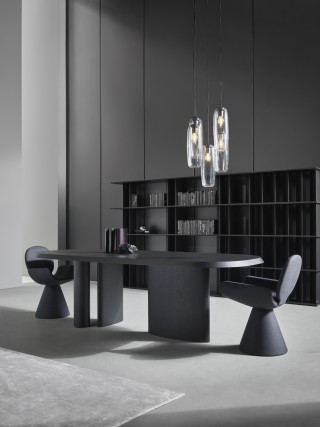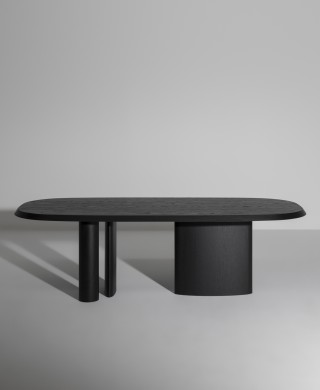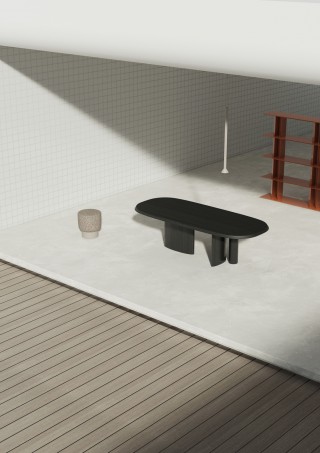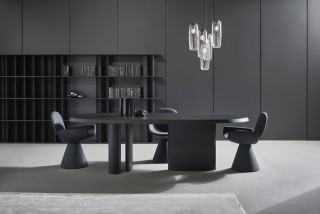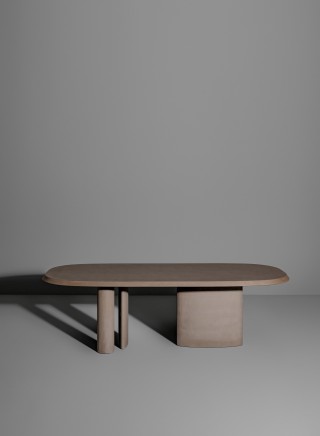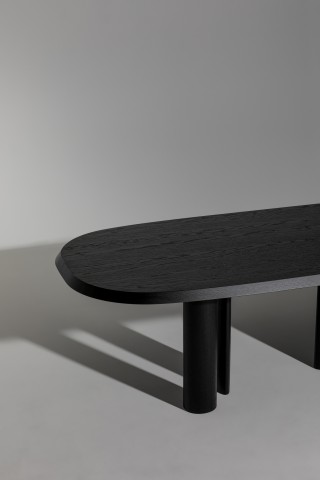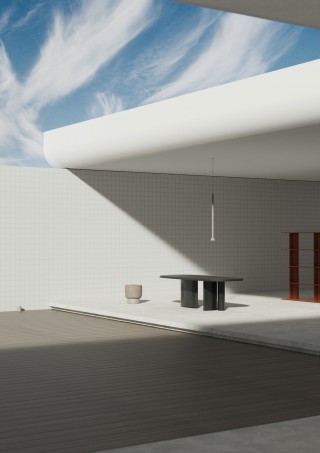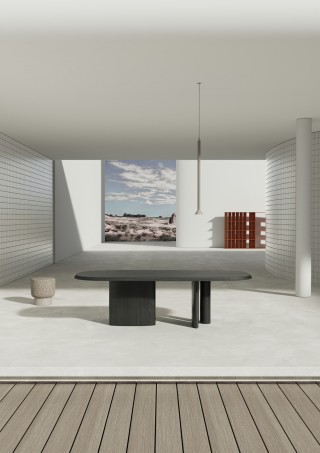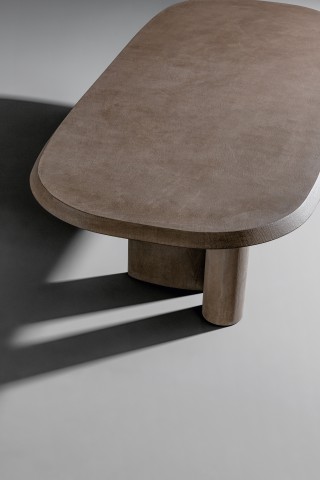PADIGLIONI
BONALDO
The Padiglioni table is conceived as a small piece of architecture, as if it were a miniature model of an architectural pavilion. A conceptual or dream-like structure made up of curved walls and round columns that interact with each other. Although very different, it follows a general logic not far from that developed by the late Mies van der Rohe for his iconic Barcelona Pavilion.
If it were a full-fledged piece of architecture, the ground it rests on would be its floor, the round and curved legs would be its supporting structure and walls, and the tabletop would be its roof. The various columns that support the tabletop all have a distinctive shape and are placed in non-symmetrical positions to create a certain dynamic within the piece. The table also looks different depending on the angle from which it is viewed, as the legs interact graphically in different ways. This gives the table a richer personality.
The Padiglioni table is also very sculptural. The way its visual masses are distributed is quite unusual, giving the table a unique dynamic and personality. Heavy on one side thanks to its very large foot, lighter on the other. As you walk around the table, the masses of the different legs often visually merge, creating unexpected sculptural forms that appear full, yet are accentuated by the light passing between the legs.
The whole table plays with softness and generosity, with large round or curved legs and a gently rounded top that is softly caressed by the light. But it also has a stronger and more masculine side with its straight lines and the tapered edge on the tabletop. This duality creates a discussion and a balance that is very common in my work.

